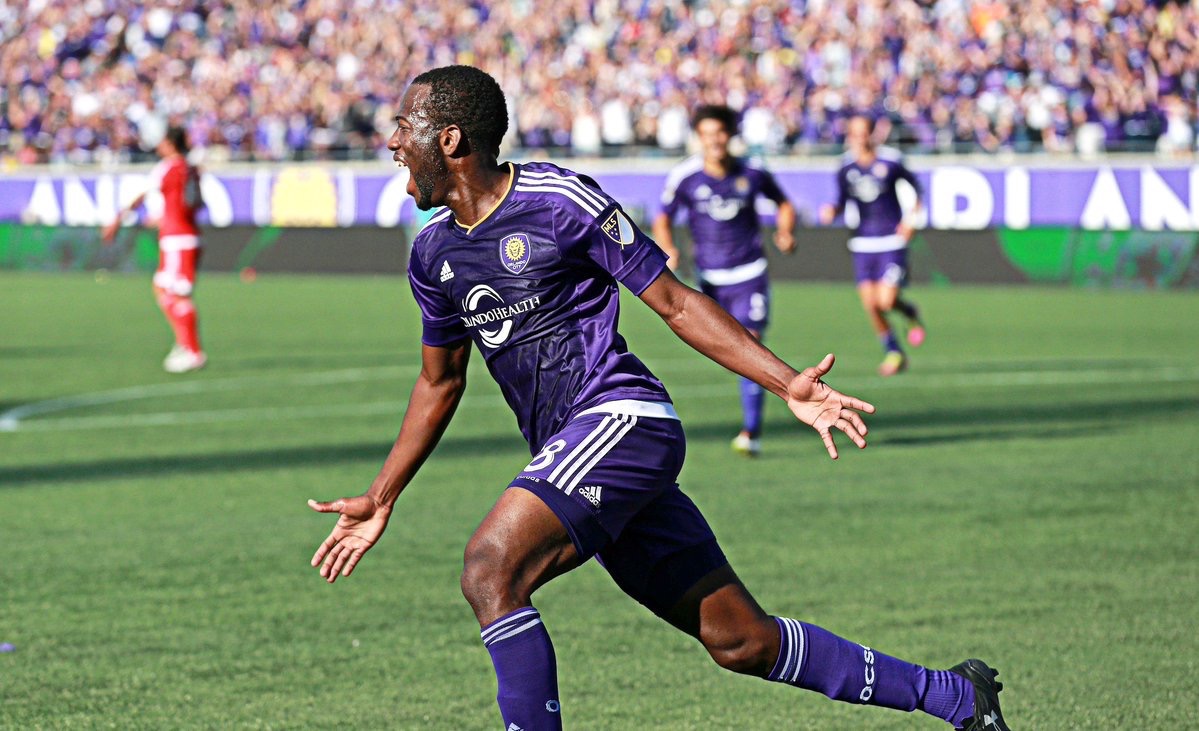It started with a conversation in November to gauge whether Kevin Molino might be available. The discussions meandered through late fall and into the holidays, staggered out of the combine and draft in early January and finally reached an apex last week.
When the months-long saga finally came to an end on Thursday, the result was a doozy.
Orlando City agreed to trade Molino (along with backup goalkeeper Patrick McLain) to the expansion Minnesota United for a total of $650,000 in allocation money -- $450,000 in general allocation and $200,000 in targeted allocation.
The figure matched the reported $650,000 that was fetched for Eddie Johnson when he was traded from Seattle to D.C. United in 2013. It also gave Minnesota a much-needed playmaker to serve at the heart of Adrian Heath’s 4-2-3-1 system.
Multiple general managers around the league told me they were shocked at the price tag. Others said they were surprised Orlando City couldn’t find a way to make Molino happy. The two general managers involved in the trade walked away feeling satisfied.
Both also felt exceptional circumstances led to an exceptional deal.
“I think it’s important to understand this is a unique situation from just us trying to put together an offer that showed Orlando we understood they had a player they wanted to keep, but we had assets to make a deal happen,” Minnesota general manager Manny Lagos said. “That takes time to absorb, and it takes time for us to say we are ready to commit those assets.”
Said Orlando GM Niki Budalic: “I don’t think this is a new [league] standard. It’s a unique situation ... I have no doubt Kevin will be a success in Minnesota. I expect him to do well and be a good foundation piece for them. On the flip side, from our perspective, we’ll move on and have the flexibility to add pieces now if need be. It’s a win-win situation.”
It didn’t always look like Molino would find a way out of Orlando.
A torn ACL cut the two-time USL MVP’s first MLS season short, but in 2016 Molino returned and, playing right wing, put up 11 goals and eight assists. His 19 combined goals and assists ranked him among the best midfielders in the league, especially when discounting secondary assists (he had none) and penalty kick goals (he had one).
Molino’s production far outweighed his salary. At $121,400 guaranteed, Molino was the 13th-highest paid player on the team, behind players like rookie Richie Laryea, right back Kevin Alston and center backs Seb Hines and Jose Aja.
When the front office and coaching staff met with players after the season, Molino didn’t give any indication he was unhappy, Budalic said. That soon changed. Molino and his representation reached out to the club about a new contract that would pay Molino a number closer to one that matched his 2016 production. It was clear that his asking price was too high for Orlando City’s comfort level.
“The expectations were definitely beyond reason, and we tried to reconcile the differences across two months,” Budalic said. “We do have a strong belief that players should be rewarded for their performances, but at the same time, we feel that reward shouldn’t necessarily come on the back of one season in which they perform well. We also strongly feel players should contribute to team success, it’s not just about individuals. Given the team didn’t make the playoffs the last two years, given that we needed to show improvement in the squad, we asked players to make a commitment to the team.
“That was different for, Kevin because Kevin felt he had been here seven years and contributed to the club, and we acknowledged and supported that. But given where we were and trying to improve the club into a contender, we asked for flexibility. Our hand was pushed, we tried to negotiate, we tried the best we could and unfortunately it was not enough for Kevin.”
When it was clear Molino wanted to move on from Orlando, the club started to shop him more aggressively. Minnesota was obviously among the clubs most eager to acquire the Trinidad and Tobago national team star. The trade interest started with conversations between the two clubs dating back to November.
Minnesota coach Adrian Heath discovered Molino when he was on a scouting trip to Trinidad to look at another player. He helped push Molino to new heights, from a possession-based midfielder to one who set a USL record for goals (20) from the No. 10 role. He felt Molino could thrive if given that chance as a playmaker again, something he had not been able to do because Kaká plays there in Orlando. (Kaká once told me he believed Molino could go to Europe and succeed on a top-end team if given the chance.)
Molino outperformed his expected goals and assists in 2016, according to analytics. He also would be moving from right wing in Orlando’s system to a No. 10 – and the centerpiece of a system – in Minnesota in 2017.
Three other GMs told me Orlando City also reached out to them about Molino in the last two weeks. One said his team was quickly priced out. Budalic acknowledged the team spoke with almost every club in MLS and was in serious talks with three clubs. He said Minnesota’s offer was not “out of whack with other offers we entertained” and that Orlando had “comparable offers.” Several potential deals included players. None stacked up to what Minnesota ultimately put on the table.
“In the end, we were considering going with a player instead of resources,” Budalic said. “But we felt the flexibility was important to us.”
The amount of allocation money was, frankly, shocking. The deal will be even more costly once Molino and Minnesota negotiate a new deal. Lagos and Budalic said any discussion about the trade should weigh the fact that, as an expansion team, Minnesota had plenty of allocation money and plenty of cap space. Sources earlier this offseason indicated the expansion teams started with approximately $2 million in GAM and another $1.5 million in TAM.
“We’re building a team and we have resources and assets some teams in MLS don’t have right now,” Lagos said. “In other areas, we don’t have as much because they have existing teams and players. So, it’s both an advantage and challenging. We only have certain types of assets in a deal like this.”
Lagos also insisted this deal was an indication of a quickly-changing market in which players are being valued differently within the league. My view: In a league where TAM players are at a premium, signing a midfielder you know – with proven success in the league, and with knowledge of your coach and system – should also come at a premium, especially considering the price tags elsewhere in the world.
“The league is changing fast in what the market is and what valuation is,” he said. “I don’t want to say we don’t look at the past and try to do market value, but we also know the league is changing about how it is going to value players in the future. This deal was a part of that potential transition.”
Now Molino needs to live up to the price tag.

